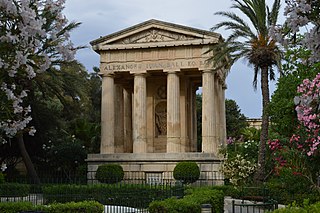 W
WIn architecture, a folly is a building constructed primarily for decoration, but suggesting through its appearance some other purpose, or of such extravagant appearance that it transcends the range of usual garden buildings.
 W
WThe Désert de Retz is a garden on the edge of the forêt de Marly in the commune of Chambourcy, in north-central France. It was created at the end of the 18th century by the aristocrat François Racine de Monville on his 40-hectare (99-acre) estate. The architect Boullée was involved in the creation of both Monville's town houses; it is less likely he had much do with the Désert de Retz, although Monville did, for a while, engage him as assistant to the architect Francois Barbier until 1780. Monville probably designed many of the features and structures himself, or had a strong supervisory role.
 W
WEl Capricho is a villa in Comillas, Cantabria, Spain, designed by Antoni Gaudí. It was built in 1883-85 for the summer use of a wealthy client, Máximo Díaz de Quijano. Unfortunately the client died a year before the house was completed.
 W
WAn exedra is a semicircular architectural recess or platform, sometimes crowned by a semi-dome, and either set into a building's façade or free-standing. The original Greek sense was applied to a room that opened onto a stoa, ringed with curved high-backed stone benches, a suitable place for conversation. An exedra may also be expressed by a curved break in a colonnade, perhaps with a semicircular seat.
 W
WThe Grottoes of Ferrand are a series of 17th-century artificial grottoes on the estate of the Château de Ferrand in Saint-Hippolyte, Gironde, in southwestern France, near the town of Saint-Émilion.
 W
WThe Hameau de Chantilly is a folly in the park of the Château de Chantilly built in 1774 and consisting of seven rustic thatched cottages with luxurious interiors set in a garden.
 W
WThe Iulia Hașdeu Castle is a folly built in the form of small castle by historian and politician Bogdan Petriceicu Hașdeu in the city of Câmpina, Romania. Work on it began in 1893, after Hasdeu's daughter, Iulia Hașdeu, died at the age of 19, an event that dramatically shook Hasdeu's life. He claimed that his late daughter provided the plans for building the castle during sessions of spiritism. The building was completed in 1896.
 W
WThe Lednice-Valtice Cultural Landscape is a cultural-natural landscape complex of 283.09 square kilometres (109.30 sq mi) in the Lednice and Valtice areas of the South Moravian Region, near Břeclav in the Czech Republic.
 W
WThe Maison carrée d'Arlac is a neoclassical folly building constructed between 1785 and 1789, in the town of Mérignac just outside Bordeaux, France. It was built for Bordeaux banker Charles Peixotto.
 W
WThe Monument to Sir Alexander Ball is a neoclassical monument in the Lower Barrakka Gardens in Valletta, Malta. It was built in 1810 as a memorial to Sir Alexander Ball, a British admiral who was the first Civil Commissioner of Malta. Attributed to the architect Giorgio Pullicino, the monument is in the form of an ancient Greek temple.
 W
WThe Swallow's Nest is a decorative castle located at Gaspra, a small spa town between Yalta and Alupka, in the Crimean Peninsula. It was built between 1911 and 1912, on top of the 40-metre (130 ft) high Aurora Cliff, in a Neo-Gothic design by the Russian architect Leonid Sherwood for the Baltic German businessman Baron von Steingel.